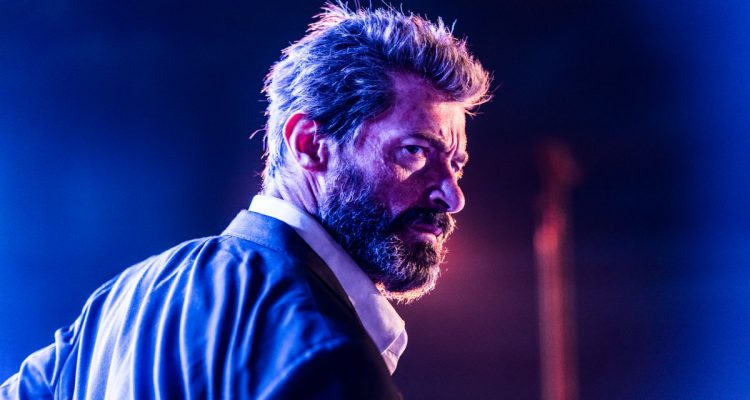Chalk it up to intense cynicism, or maybe just the experience of having lived through more blockbuster springs and summers than we care to remember, but when the first “Logan” trailer premiered back in October of last year, a couple of us had our doubts. You put officially the world’s most grief-and-regret-ridden song, Johnny Cash‘s cover of “Hurt,” over a trailer for a movie about a dude with retractable metal claws and the power to self-heal while chewing on a stogie, and you’re asking for a comparison that the film surely could not sustain. Hackles were raised at how the film was potentially looking to borrow gravitas it could not possibly earn on its own merits.
READ MORE: 12 Minute Video Breaks Down Easter Eggs, References & More In ‘Logan’
The glimpses we saw, moody shots of dim light filtering through misty woods, of Hugh Jackman‘s scarred, sinewed back and bloodied, arthritic-looking knuckles, were promising, for sure. But James Mangold, the film’s director, had already had a go at the character with “The Wolverine” and while that is very far from a bad film (until the last twenty minutes or so, when it is very close to a bad film), the sum total of all his high-falutin’ references (many of which are exactly the same films he drew on for “Logan”) never amounted to anything really resonant — nothing that would justify “Hurt.”

Rather than embody the spirit of Ozu’s “Tokyo Story,” for example, he had Wolverine take a train journey in Japan. His inspirations were less about story or theme, and more a collection of direct visual callbacks, sometimes recreated almost whole-cloth, in a way that homaged but also de-contextualized the original scene from its classic architecture. What did it mean that Wolverine was shot with arrows till he bristled with them against a snowy backdrop like in “Throne of Blood,” or that a shot of a woman about to throw herself from a cliff resembles an equivalent moment in “Black Narcissus“? Nothing much, except that Mangold has excellent taste and (therefore) a good working knowledge of the back catalogues of Akira Kurosawa and Powell & Pressburger. Why should we believe that “Logan” would be any better?
READ MORE: James Mangold Talks The Problem With Superhero Movies & The Last Line Of ‘Logan’
But “Logan” is better — significantly so — than “The Wolverine,” even if Mangold’s tendency to over-literalize his reference points meets a kind of event horizon here (no better way to make sure everyone gets that you’re referencing “Shane” than by including a scene wholesale in your movie, and then having your sole remaining living character quote it at the end). It’s a big, bruised, broken brute of a film, a wounded howl against the dying of the light and the closest the “X-Men” franchise, or indeed any Marvel character film, has ever got to real, close-to-the-adamantium-grafted-bone tragedy — all of which, ironically, it probably would have earned even without the heavy-handed “Shane” comparison. Set away in the future (or, let’s face it, a future given that this is but a single strand in the “X-Men” continuity linguine) it has the luxury of an air of finality that so few other comic-book/superhero properties do, and boy, does it make use of that — to paraphrase Mr. Cash: Everyone we know goes away in the end. If every superhero film ever has always been predicated on the idea of fighting injustice, “Logan” tackles the biggest cosmic injustice of them all: we age, we falter, we fuck up our legacies, we die and it’s just not fair.

It does all this thematically rich, melancholic work, and it also slices open about thirty heads in graphic, gory, spurting detail. Only one of those elements requires an R-rating, but the balance of the critical and box office success of “Logan,” which is already looking to be a done deal after an (initial) 93% Rotten Tomatoes score and a very strong opening weekend, is always going to be linked to its rating. This is the mystery of the “R”: while it technically reduces the audience for a film, and does automatically mean that a blockbuster will never quite blockbust in the way even a far lesser PG-13 movie might, it also becomes part of the film’s marketing arsenal.
The R-rating here, even before we’d seen anything of the movie, was a way of signaling the seriousness of the film’s intent, just like securing that song was, and a way of emphasizing the depth of Fox‘s commitment to the darkness of this script — darkness that is not, for once, just an aesthetic filter set to “gritty,” but actually rooted in the characters and their downward-spiral arcs. “We believe so much in the integrity of this story,” the R-rating seems to say, “that we’re willing to treat our potential audience like the head of a bad-guy cholo stealing rims in a car park, and slash it in half.” The domestic take of even the highest-grossing R-rated film of all time, “The Passion of the Christ,” is way less than half that of the PG-13 “Star Wars: The Force Awakens” after all.

